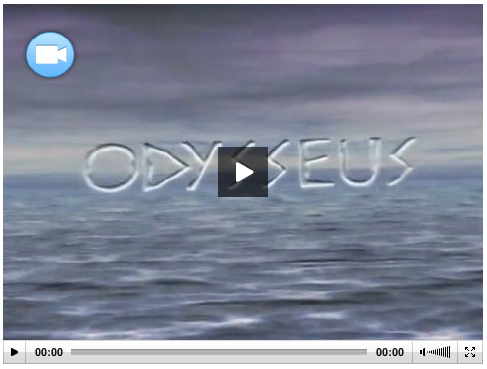
Teach Wikipedia Literacy With The Odyssey
Odysseus needed to stave off Harpies and the Cyclopes and the alluring Circe to finally reach his home and his wife. In other words, to find the one good thing he wanted, he had to suffer all manner of creatures and distractions. And teaching information literacy is a lot like Odysseus’s struggle. Students need to learn how to weed out the bad sources and biased websites when conducting research online. So we thought, why not capitalize on an apt metaphor and bring you an Odyssey lesson plan.
NOTE: This lesson plan includes Wikipedia. We know that teachers have varied views on Wikipedia. Some think it’s great; some ban it outright. But the truth is, teachers use it. So why not teach kids when Wikipedia can be useful, and when it isn’t. If kids learn how to evaluate Wikipedia and use it to reach real resources, you’ll be less likely to see it plagiarized on a term paper or cited like a source. So without further ado…
A Lesson Plan: Teach Digital Literacy With The Odyssey
Objective: Evaluate online sources for credibility, accuracy and bias.
PART ONE: Learn to Evaluate Online Sources
1. Introduce students to the key idea that they cannot trust everything they read online. They’ve likely heard this idea before. But tell them that instead of banishing the internet from the class, you are going to equip them with tools to they need to successfully tell the good from the bad. And that instead of outright banning Wikipedia, you’ll teach them when it can be useful and when it isn’t.
2. Show students the Flocabulary Odyssey video. Ask them to watch for the character (besides Odysseus) they like the best, because they are going to have the opportunity to learn more about the character.
3. When you are finished with the video, tell the class that you will model the “googling” process that many of them undertake to find strong sources and weak sources. (If your school has access to online databases, you can use that instead of google.) Go to google.com and search for Odysseus.
4. Click on a link and go through the following questioning process to determine whether a page looks like it is a good source of information. Practice answering these questions with a legitimate website, and a less legitimate one so students can see the difference.
- General Appearance: Does it look like a legitimate website? Is it well-formatted and professional looking? Are there typos?
- Author and Organization: Who is the author? Is there even one? Who does the author work for?
- Date of Publication: When was it written? Is the information still relevant?
- Intended Audience: Who is the website meant for? Does it seem to elementary or advanced for your needs?
- Reasoning: Is the information fact or opinion? Is the language objective or filled with emotional words?
- Writing Style: Is the information organized logically? Are the main points clear?
- References: Does the author list where he or she got the information?
PART TWO: The Odyssey Wikipedia Game
1. Ask students if they noticed that Wikipedia was at the top of search results. Explain that just because it is at the top, it doesn’t mean that it is the best one. But it can be useful to gain an overview on a subject when they approach it with the same critical 7 questions as above.
2. Go to wikipedia.org and search for “Odysseus”. Apply the 7 questions to show why the lack of an author on the page weakens its credibility. Show students the references though, and explain how that they can evaluate those sources to judge wikipedia credibility. Explain that Wikipedia can be a quick overview, but some pages are more biased than others.
3. Play this game to allow students to explore varying Wikipedia pages to evaluate their disparate qualities. This game is best if students each have a computer to use.
- Have each student start on the Odyssey wikipedia page.
- Say that a prize will go to the student who can find the most interesting (and school appropriate) Wikipedia topic page in 4 clicks of page links. Give students time to find their fourth page. (ex. From the Odyssey page, they might click on pentathalon, and then 1964 Summer Olympics and from there they’ll land on Nikita Khrushchev.)
- Once students land on their fourth page, ask them to evaluate the quality of the page using the 7 questions.
- For fun, have students share the random facts they have learned on their fourth page, and explain how they reached it. If they think the page might not be trustworthy, challenge them to confirm the facts elsewhere.
- State your class wikipedia policy so students clearly understand when it is okay for them to use it or not. We recommend explaining that students can use it to start research and get a background, but cannot cite it as a source and must verify information elsewhere.
Other Odyssey Resources
And by the way, if you are looking for a straight Odyssey Lesson Plan, many a fine English teacher has created and compiled hundreds of great resources here and here and here.
Thanks to the #historychat community for a great conversation about source analysis that in part inspired this post.

